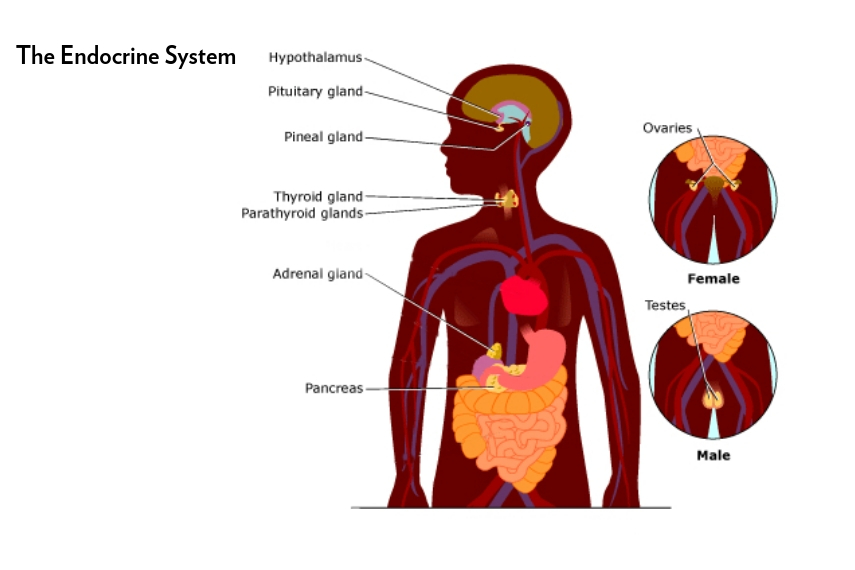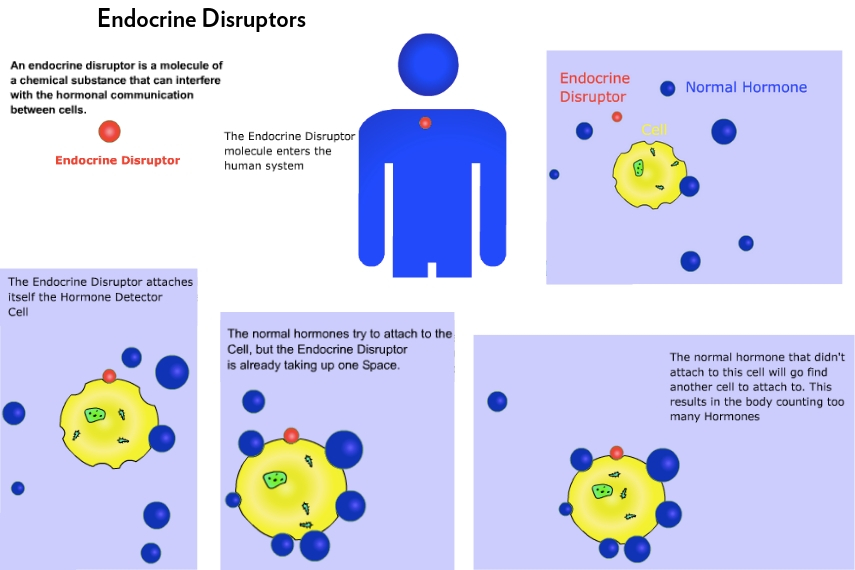The Endocrine System & the Harms of Endocrine Disruptors
What is the endocrine system?
The Endocrine System includes all the glands in your body and the hormones they make. It is in charge of body processes that happen slowly, like as cell growth. It influences almost every cell, organ, and function of our bodies. The endocrine system plays a role in regulating mood, growth & development, tissue function, metabolism, and sexual function & reproductive processes.
What does the endocrine system do?
Different glands produce different hormones, which are the body’s chemical messengers. They transfer information and instructions from one set of cells to another. Many different hormones move through the bloodstream, but each type of hormone is designed to affect only certain cells. Once a hormone is secreted, it travels from the endocrine gland that produced it through the bloodstream to the cells designed to receive its message. When hormone levels reach a certain normal amount, the endocrine system helps the body to keep that level of hormone in the blood.
The Endocrine Glands Include:
- Hypothalamus
- Pituitary gland
- Pineal gland
- Thyroid
- Parathyroids
- Adrenal glands
- Pancreas
- Reproductive glands (including ovaries and testes)
Things That Can Go Wrong
Too much or too little of any hormone can be harmful to your body. A few examples of this are early onset of puberty, Diabetes (Types 1 and 2), growth hormone problems, hyperthyroidism and hypothyroidism, and adrenal insufficiency.
What are Endocrine Disruptors?
Chemicals (both natural and man-made) that interfere with the hormonal system are endocrine disruptors.
Endocrine disrupting chemicals interfere with normal hormone action. They can mimic or block hormones, affect their production, affect their movement throughout the body, and affect their metabolism.
The image below illustrates just one of the ways in which EDCs can act (see the animation at greenfacts.org).
Harms of Endocrine Disruptors
There is no end to the tricks that endocrine disruptors can play on our bodies: increasing production of certain hormones; decreasing production of others; imitating hormones; turning one hormone into another; interfering with hormone signaling; telling cells to die prematurely; competing with essential nutrients; binding to essential hormones; accumulating in organs that produce hormones.
A few examples of the effects include reduced reproductive ability, development of certain cancers, delayed cognitive development, altered response to stress, increased accumulation of fat, and changes in sensitivity to insulin.
The effects of EDCs can vary depending on when in the lifetime exposure occurs. Fetal development, early childhood, and puberty are critical periods for exposure because events early in life set the stage for how the body responds to the environment throughout life.
What You Can Do
- Avoid buying and using products containing known EDCs (use product databases from the Environmental Working Group).
- Read the EWG’s Dirty Dozen List of Endocrine Disruptors, 12 Hormone-Altering Chemicals and How to Avoid Them, and download their PDF here.
- Shop with Sprout San Francisco, avoiding harmful chemicals isn’t just our mission – it’s the reason we exist.
SOURCES
https://www.mountsinai.org/health-library/special-topic/endocrine-glands
https://www.rchsd.org/health-articles/endocrine-system/
https://www.ewg.org/enviroblog/2008/10/please-dont-disrupt-my-endocrines
https://www.ewg.org/enviroblog/2012/05/new-york-times-kristof-lays-out-case-against-endocrine-disruptors
https://www.nytimes.com/2012/05/03/opinion/kristof-how-chemicals-change-us.html
https://www.greenfacts.org/en/endocrine-disruptors/l-2/endocrine-disruptors-1.htm#2
https://www.ewg.org/research/dirty-dozen-list-endocrine-disruptors
https://static.ewg.org/pdf/kab_dirty_dozen_endocrine_disruptors.pdf
https://endocrinedisruption.org/interactive-tools/endocrine-basics
https://endocrinedisruption.org/assets/media/documents/EDC%20Fact%20Sheet%2020180130.pdf



